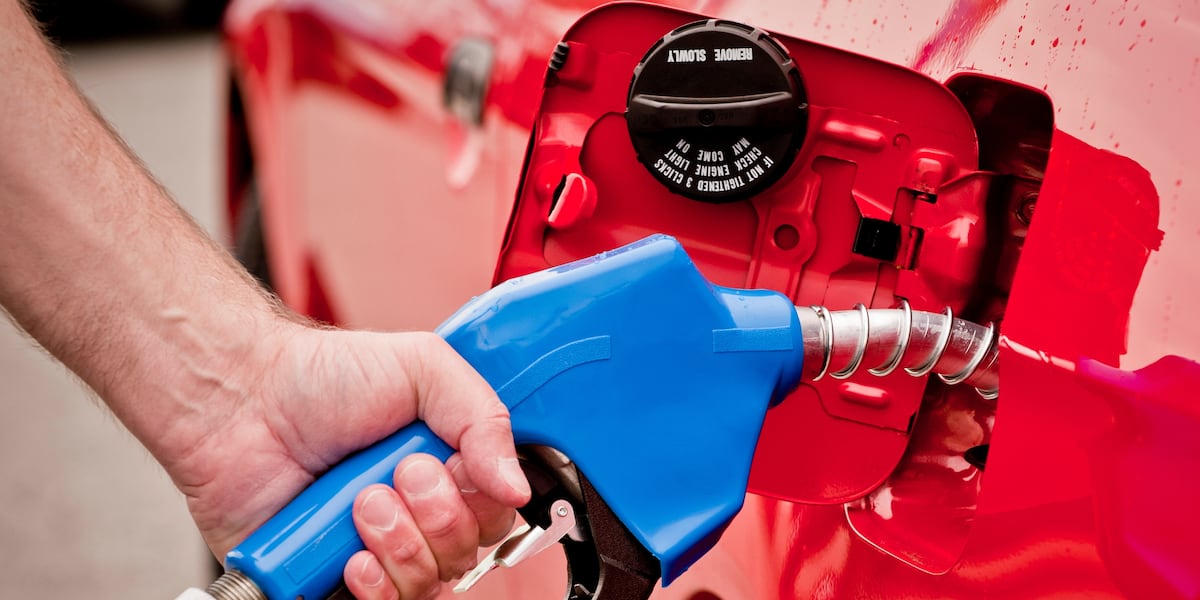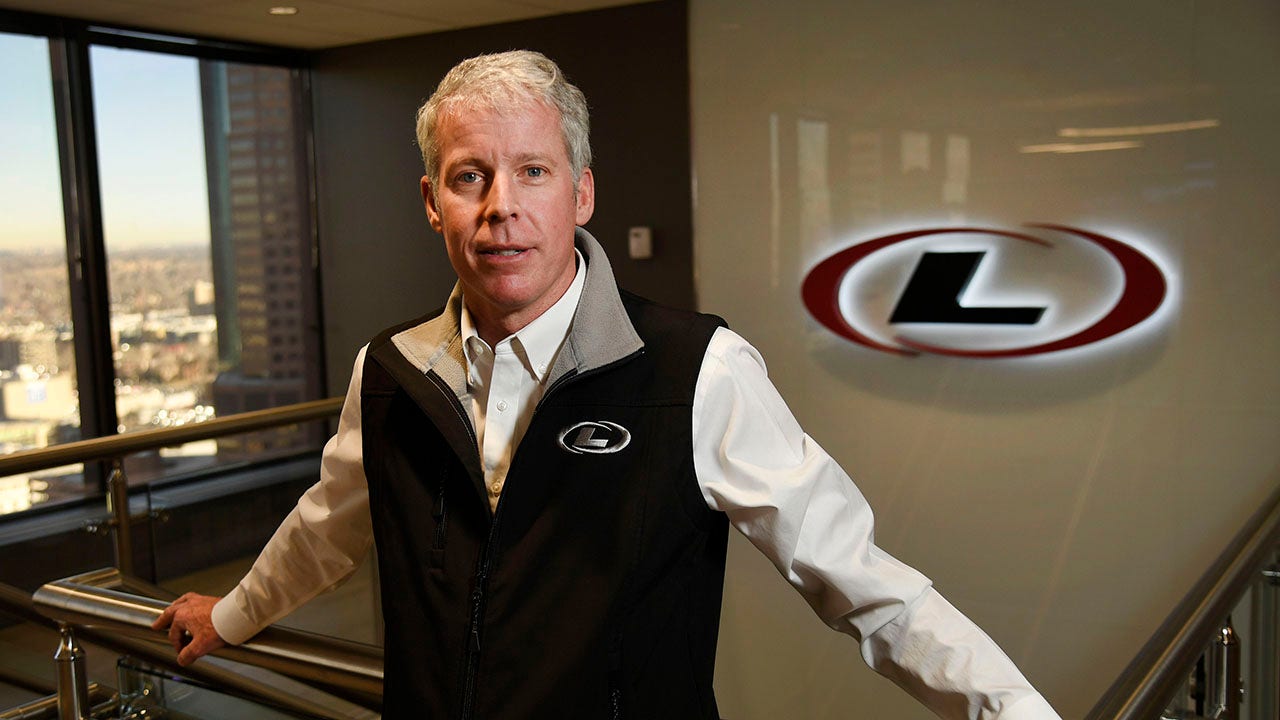Vermont
From disaster to hope: A Vermont family thankful for community support after flood destroyed home

PEACHAM, Vt. — The last thing John and Jenny Mackenzie saw as they fled their Vermont home with their daughters, dog and two guinea pigs last summer was their cars upended and propelled away by rushing flood waters.
Minutes earlier they had abandoned their 19th-century wood-frame house as the remnants of Hurricane Beryl turned it into an island engulfed by surging flood waters, with trees slamming into it and water gushing at colossal speed into the basement and first floor.
“It was just like it was a horror movie at that point,” John Mackenzie said of the surreal scene on that July 10 night.
“We lost both of our vehicles, our home and our barn and at least half of our possessions,” Jenny Mackenzie said.
Since that terrifying storm when two people died swept away in vehicles, the Mackenzies, both teachers, and their twin daughters have been living temporarily in a friend’s house. They have scrambled to figure out something permanent, a daunting task in a state with a housing shortage and when government programs to buy out flood-destroyed homes can take a year or more and are not guaranteed.
But four months after the devastating loss, the family is writing a new chapter.
Donations from friends, family and others in their community have helped the Mackenzies find a new house in time for Thanksgiving, giving them hope amid ongoing challenges. The Associated Press is following them through their recovery.
Lila, left, John and Jenny Mackenzie pose for a photo in their flood-damaged house in Peacham, Vt. on Sept. 23, 2024. Credit: AP/Dmitri Beliakov
Community rallies to help flood-stricken family
The Mackenzies quickly learned how much support they had.
Two days after the storm, dozens of volunteers showed up to help salvage what they could. Floodwaters had reduced the lawn to a muddy chasm; their septic system was destroyed.
In the rain, volunteers carried furniture and other belongings across a gulch to waiting all-terrain vehicles, which drove them on dirt roads to the village where the family is staying.
Friends set up an online fundraising page that has raised over $160,000. Over 950 donations have come in, some from former students, ranging from $5 to $10,000.
The kitchen in the flood-damaged home of John and Jenny Mackenzie is shown on Sept. 23, 2024 in Peacham, Vt. Credit: AP/Dmitri Beliakov

“It’s unbelievable the way that we were supported and we’ve been trying to find ways to communicate that gratitude,” said John Mackenzie, 49.
The donations allowed them to buy used vehicles, keep teaching and carry on with life, his 50-year-old wife said. As much as the money, it means a lot that people were thinking about them, she said.
“It doesn’t make them whole, all of the damage that they experienced, but yes that’s an amazing amount and I think it speaks to the community that’s around them and how well loved they are,” said Cara Robechek, who helped start the fundraising effort.
“They’re both teachers. They are sort of deeply embedded in a lot of communities.”
An uncertain future
The Mackenzies owned their two-story house, built in 1840 with clapboard siding painted sage green, for 21 years. They raised their 16-year-old daughters, Lila and Kate, there.
“We’re already aware that for us losing the home after 21 years is huge but this is the only home they ever knew,” John Mackenzie said of their girls. “We want to recreate a new home.”
The Mackenzies applied for a buyout and wanted to stay in Peacham, but housing costs in the town of 700 have soared and are out of reach, they said.
As of this fall, about 250 households have applied for buyouts, most both federally and state funded, from the severe flooding in early July and later that month that hit parts of central and northern Vermont, according to the state.
Once a buyout application is complete, it can sit in review with the Federal Emergency Management Agency for up to a year, said Stephanie Smith, the state hazard mitigation officer with Vermont Emergency Management.
The Mackenzies got another setback last week when they learned their property may not be eligible for a FEMA buyout, although Smith said Monday the state is working to make it eligible. The Mackenzies have to provide more detailed information, including receipts from repair work done after a previous flood. But they lost much of that paperwork in this summer’s storm, Jenny Mackenzie said.
If FEMA funding falls through, Smith said the state will review the Mackenzies’ case for a state buyout program early next year.
“The reality is that we won’t be able to afford to stay in this house that we’ve bought unless that buyout goes through,” Jenny Mackenzie said.
Climate change fuels stronger storms
The flooding came exactly a year after catastrophic floods hit areas of rural, mountainous Vermont, including the capital, Montpelier. Some northern communities were pummeled twice by the severe flash flooding this July.
Experts say Vermont could see more frequent catastrophic events like these, with climate change fueling stronger storms and striking Vermont villages situated along the Green Mountains’ rivers and streams.
Donations help family buy a new home
Unable to find an affordable house in Peacham, the Mackenzies made the difficult decision to look elsewhere. In late September, they put down an offer on a house in Craftsbury, about 30 miles away. The commute to St. Johnsbury Academy where they both teach English and their daughters go to school is about 50 minutes compared to the 20 minutes they used to drive. They plan to move in mid-winter.
The white clapboard farmhouse with a red door — also built in 1840 — reminds them of their Peacham home.
After the sale closed, Jenny Mackenzie bought a trowel — “I didn’t have one anymore,” she said — and planted about 100 daffodils that a friend rescued from the family’s flooded house. Another friend gave her more. Jenny Mackenzie usually plants 500 a year.
“It felt good to get in a few because that will really make us feel like home,” she said as their German shorthaired pointer, Hester, ran around her new grounds.
A friend is reupholstering their flood-damaged rocking chairs and couch. The family’s antique piano, built in 1895, could not be saved; it’s the only thing remaining at the old house.
The Mackenzies would not be where they are without the financial and other support of friends and family.
“There’s no way we could have done that prior to a buyout,” Jenny Mackenzie said of paying off the mortgage on the old house, as well as a government loan from previous flood damage, and then buying a new house. “Even now it’s financially precarious.”
The family has learned through this experience to open themselves up to everything — to suggestions about where they might relocate, to kindness, to community, John Mackenzie said.
There were moments, initially, when it was hard to accept that kind of generosity and the loss of some privacy around money, he said. But it’s helped to know he would donate if there were another family in need, and he and his wife are incredibly grateful.
“It’s kind of completely broke us open,” he said.

Vermont
‘The Sex Lives of College Girls’ is set at a fictional Vermont college. Where is it filmed?

The most anticipated TV shows of 2025
USA TODAY TV critic Kelly Lawler shares her top 5 TV shows she is most excited for this year
It’s time to hit the books: one of Vermont’s most popular colleges may be one that doesn’t exist.
The Jan. 15 New York Times mini crossword game hinted at a fictional Vermont college that’s used as the setting of the show “The Sex Lives of College Girls.”
The show, which was co-created by New Englander Mindy Kaling, follows a group of women in college as they navigate relationships, school and adulthood.
“The Sex Lives of College Girls” first premiered on Max, formerly HBO Max, in 2021. Its third season was released in November 2024.
Here’s what to know about the show’s fictional setting.
What is the fictional college in ‘The Sex Lives of College Girls’?
“The Sex Lives of College Girls” takes place at a fictional prestigious college in Vermont called Essex College.
According to Vulture, Essex College was developed by the show’s co-creators, Kaling and Justin Noble, based on real colleges like their respective alma maters, Dartmouth College and Yale University.
“Right before COVID hit, we planned a research trip to the East Coast and set meetings with all these different groups of young women at these colleges and chatted about what their experiences were,” Noble told the outlet in 2021.
Kaling also said in an interview with Parade that she and Noble ventured to their alma maters because they “both, in some ways, fit this East Coast story” that is depicted in the show.
Where is ‘The Sex Lives of College Girls’ filmed?
Although “The Sex Lives of College Girls” features a New England college, the show wasn’t filmed in the area.
The show’s first season was filmed in Los Angeles, while some of the campus scenes were shot at Vassar College in Poughkeepsie, New York. The second season was partially filmed at the University of Washington in Seattle, Washington.
Vermont
Tom Salmon, governor behind ‘the biggest political upset in Vermont history,’ dies at 92 – VTDigger

When Vermont Democrats lacked a gubernatorial candidate the afternoon of the primary deadline in August 1972, Rockingham lawyer Tom Salmon, in the most last-minute of Hail Mary passes, threw his hat in the ring.
“There could be a whale of a big surprise,” Salmon was quoted as saying by skeptical reporters who knew the former local legislator had been soundly beached in his first try for state office two years earlier.
Then a Moby Dick of a shock came on Election Day, spurring the Burlington Free Press to deem Salmon’s Nov. 7, 1972, victory over the now late Republican businessman Luther “Fred” Hackett “the biggest political upset in Vermont history.”
Salmon, who served two terms as governor, continued to defy the odds in subsequent decades, be it by overcoming a losing 1976 U.S. Senate bid to become president of the University of Vermont, or by entering a Brattleboro convalescent home in 2022, only to confound doctors by living nearly three more years until his death Tuesday.
Salmon, surrounded by family, died just before sundown at the Pine Heights Center for Nursing and Rehabilitation at age 92, his children announced shortly after.
“Your man Winston Churchill always said, ‘Never, never, never, never give up,” Salmon’s son, former state Auditor Thomas M. Salmon, recalled telling his father in his last days, “and Dad, you’ve demonstrated that.”
Born in the Midwest and raised in Massachusetts, Thomas P. Salmon graduated from Boston College Law School before moving to Rockingham in 1958 to work as an attorney, a municipal judge from 1963 to 1965, and a state representative from 1965 to 1971.
Salmon capped his legislative tenure as House minority leader. But his political career hit a wall in 1970 when he lost a race for attorney general by 17 points to incumbent Jim Jeffords, the now late maverick Republican who’d go on to serve in the U.S. House and Senate before his seismic 2001 party switch.

Vermont had made national news in 1962 when the now late Philip Hoff became the first Democrat to win popular election as governor since the founding of the Republican Party in 1854. But the GOP had a vise-grip on the rest of the ballot, held two-thirds of all seats in the Legislature and took back the executive chamber when the now deceased insurance executive Deane Davis won after Hoff stepped down in 1968.
As Republican President Richard Nixon campaigned for reelection in 1972, Democrats were split over whether to support former Vice President Hubert Humphrey or U.S. senators George McGovern or Edmund Muskie. The Vermont party was so divided, it couldn’t field a full slate of aspirants to run for state office.
“The reason that we can’t get candidates this year is that people don’t want to get caught in the struggle,” Hoff told reporters at the time. “The right kind of Democrat could have a good chance for the governorship this year, but we have yet to see him.”
Enter Salmon. Two years after his trouncing, he had every reason not to run again. Then he attended the Miami presidential convention that nominated McGovern.
“I listened to the leadership of the Democratic Party committed to tilting at windmills against what seemed to be the almost certain reelection of President Nixon,” Salmon recalled in a 1989 PBS interview with journalist Chris Graff. “That very night I made up my mind I was going to make the effort despite the odds.”

Before Vermont moved its primaries to August in 2010, party voting took place in September. That’s why Salmon could wait until hours before the Aug. 2, 1972, filing deadline to place his name on the ballot.
“Most Democratic leaders conceded that Salmon’s chances of nailing down the state’s top job are quite dim,” wrote the Rutland Herald and Times Argus, reporting that Salmon was favored by no more than 18% of those surveyed.
(Gov. Davis’ preferred successor, Hackett, was the front-runner. A then-unknown Liberty Union Party candidate — Bernie Sanders — rounded out the race.)
“We agreed that there was no chance of our winning the election unless the campaign stood for something,” Salmon said in his 1989 PBS interview. “Namely, addressed real issues that people in Vermont cared about.”
Salmon proposed to support average residents by reforming the property tax and restricting unplanned development, offering the motto “Vermont is not for sale.” In contrast, his Republican opponent called for repealing the state’s then-new litter-decreasing bottle-deposit law, while a Rutland County representative to the GOP’s National Committee, Roland Seward, told reporters, “What are we saving the environment for, the animals?”
As Republicans crowded into a Montpelier ballroom on election night, Salmon stayed home in the Rockingham village of Bellows Falls — the better to watch his then 9-year-old namesake son join a dozen friends in breaking a garage window during an impromptu football game, the press would report.
At 10:20 p.m., CBS news anchor Walter Cronkite interrupted news of a Nixon landslide to announce, “It looks like there’s an upset in the making in Vermont.”
The Rutland Herald and Times Argus summed up Salmon’s “winning combination” (he scored 56% of the vote) as “the image of an underdog fighting ‘the machine’” and “an appeal to the pocketbook on taxes and electric power.”
Outgoing Gov. Davis would later write in his autobiography that the Democrat was “an extremely intelligent, articulate, handsome individual with loads of charm.”
“Salmon accepted a challenge which several other Democrats had turned down,” the Free Press added in an unusual front-page editorial of congratulations. “He then accomplished what almost all observers saw as a virtual impossibility.”

As governor, Salmon pushed for the prohibition of phosphates in state waters and the formation of the Agency of Transportation. Stepping down after four years to run for U.S. Senate in 1976, he was defeated by incumbent Republican Robert Stafford, the now late namesake of the Stafford federal guaranteed student loan program.
Salmon went on to serve as president of the University of Vermont and chair of the board of Green Mountain Power. In his 1977 gubernatorial farewell address, he summed up his challenges — and said he had no regrets.
“A friend asked me the other day if it was all worth it,” Salmon said. “Wasn’t I owed more than I received with the energy crisis, Watergate, inflation, recession, natural disasters, no money, no snow, a tax revolt, and the anxiety of our people over government’s capacity to respond to their needs? My answer was this: I came to this state in 1958 with barely enough money in my pocket to pay for an overnight room. In 14 short years I became governor. The people of Vermont owe me nothing. I owe them everything for the privilege of serving two terms in the highest office Vermont can confer on one of its citizens.”
Vermont
New group of power players will lobby for housing policy in Montpelier – VTDigger

This story, by Report for America corps member Carly Berlin, was produced through a partnership between VTDigger and Vermont Public.
A new pro-housing advocacy group has entered the scene at the Vermont Statehouse. Their message: Vermont needs to build, build, build, or else the state’s housing deficit will pose an existential threat to its future economy.
Let’s Build Homes announced its launch at a Tuesday press conference in Montpelier. While other housing advocacy groups have long pushed for affordable housing funding, the group’s dedicated focus on loosening barriers to building housing for people at all income levels is novel. Its messaging mirrors that of the nationwide YIMBY (or “Yes in my backyard”) movement, made up of local groups spanning the political spectrum that advocate for more development.
“If we want nurses, and firefighters, and child care workers, and mental health care workers to be able to live in this great state – if we want vibrant village centers and full schools – adding new homes is essential,” said Miro Weinberger, former mayor of Burlington and the executive chair of the new group’s steering committee.
Let’s Build Homes argues that Vermont’s housing shortage worsens many of the state’s other challenges, from an overstretched tax base to health care staffing woes. A Housing Needs Assessment conducted last year estimates that Vermont needs between 24,000 and 36,000 year-round homes over the next five years to return the housing market to a healthy state – to ease tight vacancy rates for renters and prospective homebuyers, mitigate rising homelessness, and account for shifting demographics. To reach those benchmarks, Vermont would need to double the amount of new housing it creates each year, the group’s leaders said.
If Vermont fails to meet that need, the stakes are dire, said Maura Collins, executive director of the Vermont Housing Finance Agency.
“It will not be us who live here in the future – it will not be you and I. Instead, Vermont will be the playground of the rich and famous,” Collins warned. “The moderate income workers who serve those lucky few will struggle to live here.”
The coalition includes many of the usual housing players in Vermont, from builders of market-rate and affordable housing, to housing funders, chambers of commerce and the statewide public housing authority. But its tent extends even wider, with major employers, local colleges and universities, and health care providers among its early supporters.
Its leaders emphasize that Vermont can achieve a future of “housing abundance” while preserving Vermont’s character and landscape.
The group intends to maintain “a steady presence” in Montpelier, Weinberger said, as well as at the regional and local level. A primary goal is to give public input during a statewide mapping process that will determine the future reach of Act 250, Vermont’s land-use review law, Weinberger said.
Let’s Build Homes also wants lawmakers to consider a “housing infrastructure program,” Weinberger said, to help fund the water, sewer and road networks that need to be built in order for housing development to be possible.

The group plans to focus on reforming the appeals process for new housing, curtailing a system that allows a few individuals to tank housing projects that have broad community buy-in, Weinberger said. Its policy platform also includes a call for public funding to create permanently affordable housing for low-income and unhoused people, as well as addressing rising construction costs “through innovation, increased density, and new investment in infrastructure,” according to the group’s website.
The Vermont Housing Finance Agency is currently serving as the fiscal agent for the group as it forms; the intent is to ultimately create an independent, nonprofit advocacy organization, Weinberger said. Let’s Build Homes has raised $40,000 in pledges so far, he added, which has come from “some of the large employers in the state and philanthropists.” Weinberger made a point to note that “none of the money that this organization is going to raise is coming from developers.”
Other members of the group’s steering committee include Collins, Vermont Gas CEO Neale Lunderville, and Alex MacLean, former staffer of Gov. Peter Shumlin and current communications lead at Leonine Public Affairs. Corey Parent, a former Republican state senator from St. Albans and a residential developer, is also on the committee, as is Jak Tiano, with the Burlington-based group Vermonters for People Oriented Places. Jordan Redell, Weinberger’s former chief of staff, rounds out the list.
Signatories for the coalition include the University of Vermont Health Network, the Vermont League of Cities and Towns, Middlebury College, Green Mountain Power, Beta Technologies, and several dozen more. Several notable individuals have also signed onto the platform, including Alex Farrell, the commissioner of the Department of Housing and Community Development, and two legislators, Rep. Abbey Duke, D-Burlington, and Rep. Herb Olson, D-Starksboro.
-

 Health1 week ago
Health1 week agoOzempic ‘microdosing’ is the new weight-loss trend: Should you try it?
-
/cdn.vox-cdn.com/uploads/chorus_asset/file/25822586/STK169_ZUCKERBERG_MAGA_STKS491_CVIRGINIA_A.jpg)
/cdn.vox-cdn.com/uploads/chorus_asset/file/25822586/STK169_ZUCKERBERG_MAGA_STKS491_CVIRGINIA_A.jpg) Technology6 days ago
Technology6 days agoMeta is highlighting a splintering global approach to online speech
-

 Science4 days ago
Science4 days agoMetro will offer free rides in L.A. through Sunday due to fires
-
/cdn.vox-cdn.com/uploads/chorus_asset/file/25821992/videoframe_720397.png)
/cdn.vox-cdn.com/uploads/chorus_asset/file/25821992/videoframe_720397.png) Technology1 week ago
Technology1 week agoLas Vegas police release ChatGPT logs from the suspect in the Cybertruck explosion
-

 Movie Reviews1 week ago
Movie Reviews1 week ago‘How to Make Millions Before Grandma Dies’ Review: Thai Oscar Entry Is a Disarmingly Sentimental Tear-Jerker
-

 Health1 week ago
Health1 week agoMichael J. Fox honored with Presidential Medal of Freedom for Parkinson’s research efforts
-

 Movie Reviews1 week ago
Movie Reviews1 week agoMovie Review: Millennials try to buy-in or opt-out of the “American Meltdown”
-

 News1 week ago
News1 week agoPhotos: Pacific Palisades Wildfire Engulfs Homes in an L.A. Neighborhood




















